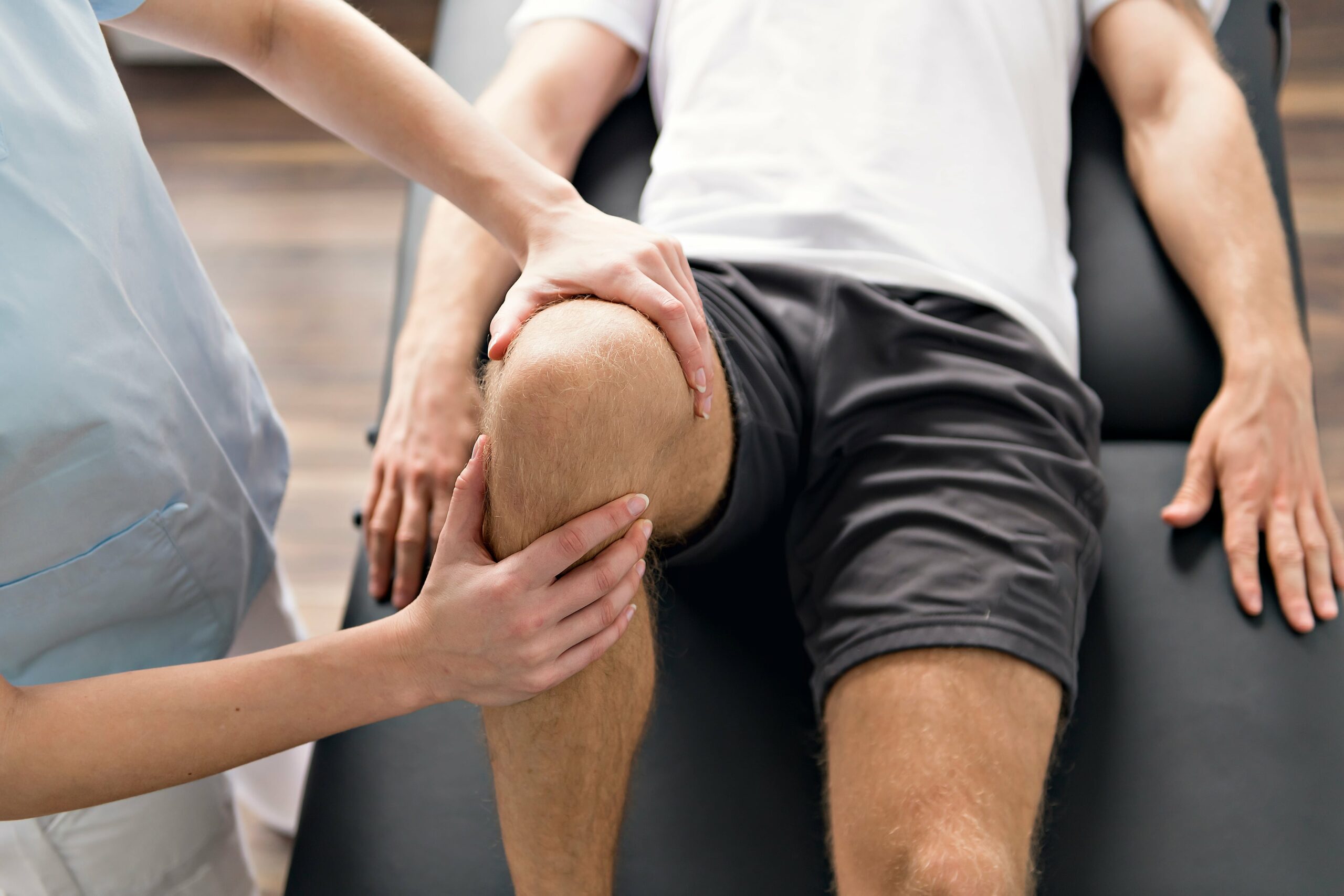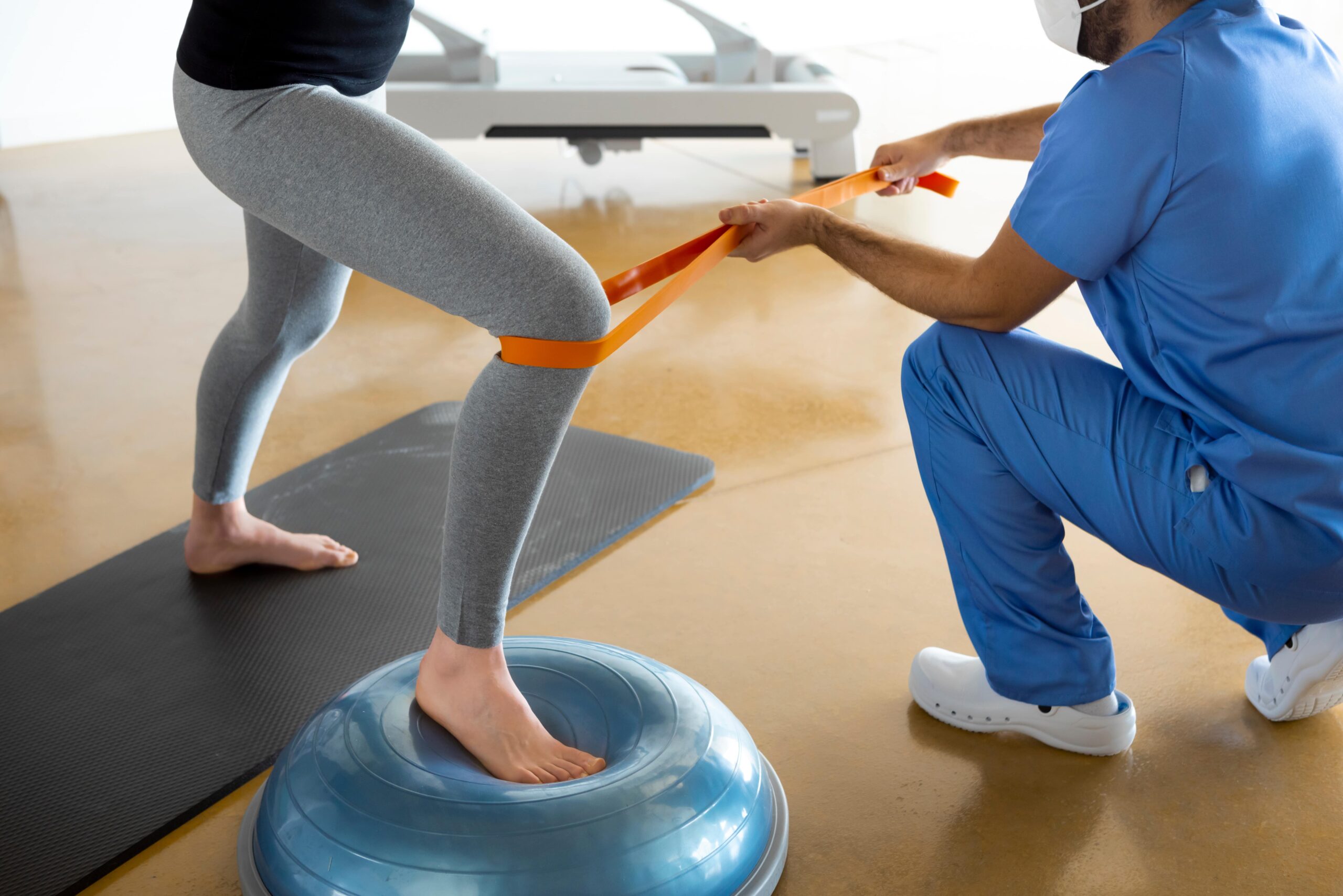Diagnosis and Treatment of Posterior Cruciate Ligament (PCL) Injuries in Wake County

What is a PCL Injury?
The posterior cruciate ligament is located in the back of the knee. It is one of several ligaments that connect the femur to the tibia and prevents the tibia from moving too far backward. PCL injuries happen far less often than injuries to the anterior cruciate ligament (ACL) and require a powerful force.

Causes and Types of PCL Injuries
PCL injuries are often subtle and more difficult to evaluate than other ligament injuries. The PCL can tear if your shinbone is hit hard just below the knee or if you fall on a bent knee. The main causes of a PCL injury include:
- A direct blow to the front of the knee (such as a bent knee hitting a dashboard in a car crash, or a fall onto a bent knee while playing a sport)
- Pulling or stretching the ligament (such as in a twisting or hyperextension injury)
- A simple misstep
PCL Injuries can be categorized into three different grades, depending on their severity.
- Mild or Grade 1: The ligament is mildly damaged in a Grade 1 sprain. It has been slightly stretched but is still able to keep the knee joint stable.
- Moderate or Grade 2: A Grade 2 sprain stretches the ligament to the point where it becomes loose, often referred to as a partial tear.
- Severe or Grade 3: A complete tear, or Grade 3 sprain, happens when the ligament has been split into two pieces and the knee joint is unstable.
Symptoms of a PCL Injury
If there are no associated injuries to other parts of the knee, signs of a PCL injury can be so mild that you might not even notice that anything is wrong. Over time, the pain may worsen or your knee may feel more unstable. The most common symptoms of a PCL injury are:
- Pain that occurs steadily, causing a slight limp
- Swelling that develops rapidly, within hours after the injury
- Difficulty walking
- Instability (the feeling that your knee might give out)
How are PCL Injuries Diagnosed?
During your physical examination, your doctor will check all the structures of your injured knee, pressing on the knee to feel for injury, looseness, or fluid in the joint. Your doctor will ask you about your symptoms and review your medical history. In some cases, imaging tests may be used to confirm your diagnosis, including X-rays and MRIs.

Treatment Options for PCL Injuries at Raleigh Orthopaedic
Treatment for a PCL injury will depend on the extent of your injury and whether it just occurred or has been present for a longer time. If you have recently injured your PCL, it will likely heal quite well using conservative treatment methods. If you dislocated your knee or you’ve torn multiple ligaments, including the PCL, surgery is almost always necessary.
There are several nonsurgical treatment options for a PCL injury. These include:
- RICE – When you are first injured, using the rest, ice, compression, and elevation method can help speed up your recovery.
- Immobilization – Your doctor may recommend a brace to prevent the knee from moving during the healing process.
- Physical therapy – Specific exercises ordered by your doctor can help restore function to the knee and strengthen the supporting leg muscle.
If you have combined injuries, your doctor may recommend surgery. Surgery might also be considered if you have persistent episodes of knee instability despite appropriate rehabilitation. The surgical procedure to repair a PCL can be performed arthroscopically by inserting a camera and long, slender surgical tools through small incisions around the knee. If surgery is the right next step for treating your PCL injury, your physician will ensure that you understand all steps of the process.

Recovery from Surgery for a PCL Injury
Full recovery from PCL surgery can take about one year. After surgery, you will have a period of five to six weeks where you should not put any weight on your leg. After the first six weeks, you will likely start some sort of physical therapy program to work on getting your range of motion, strength, and balance back to normal. Light activity, such as walking or swimming, can begin about three months after surgery if there are no complications.
How to Prevent PCL Injuries?
Many PCL injuries occur as a result of an accident while playing sports or working out, which makes it very difficult to prevent this type of injury. There are, however, certain measures you can take that can greatly reduce your risk. Before playing a sport or doing an intense workout, it is very important to stretch. Working the knees specifically is a great way to keep your joints healthy and prevent the risk of injury. While playing sports, always stay alert and be prepared for any sort of contact. It is important to make sure you follow the appropriate technique when playing your sport.

PCL Injury Treatment at Raleigh Orthopaedic
Once your condition has been identified, our team of knee experts at Raleigh Orthopaedic will develop a comprehensive treatment plan based on your specific needs. We treat all types of knee conditions in North Carolina, including PCL injuries, using both surgical and nonsurgical techniques. Contact us for more information about our services or visit one of our clinics in Wake County for expert orthopedic care today.














